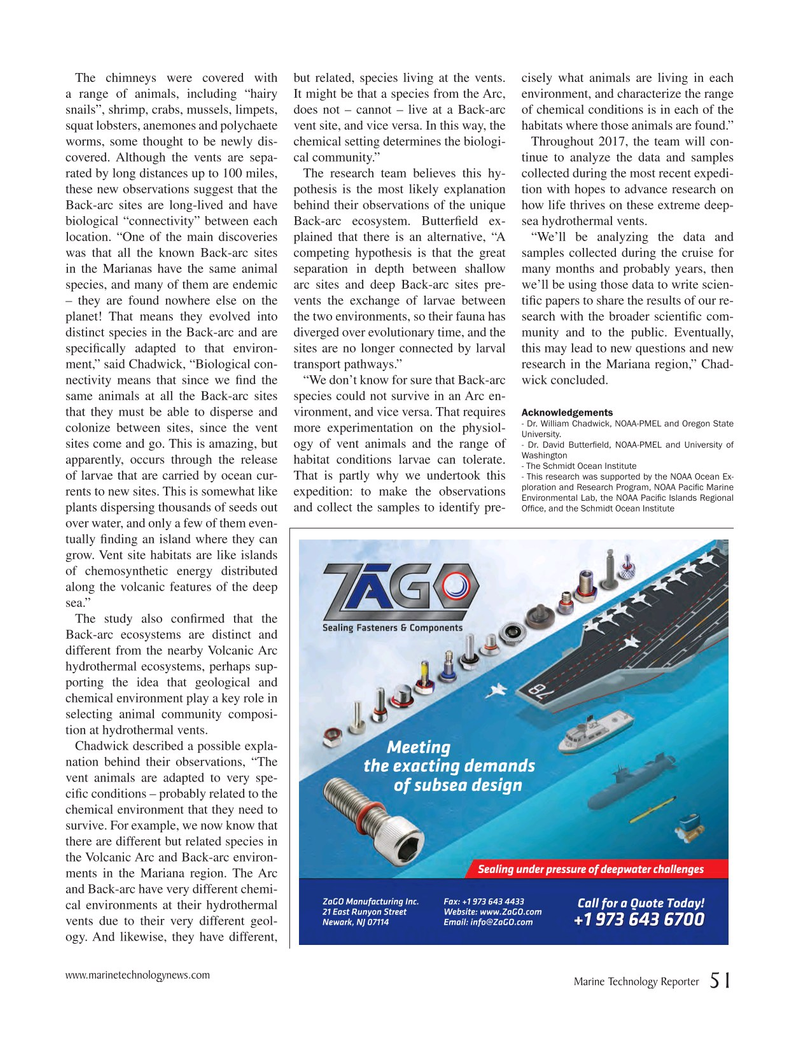
Page 51: of Marine Technology Magazine (March 2017)
Oceanographic Instrumentation: Measurement, Process & Analysis
Read this page in Pdf, Flash or Html5 edition of March 2017 Marine Technology Magazine
The chimneys were covered with but related, species living at the vents. cisely what animals are living in each a range of animals, including “hairy It might be that a species from the Arc, environment, and characterize the range snails”, shrimp, crabs, mussels, limpets, does not – cannot – live at a Back-arc of chemical conditions is in each of the squat lobsters, anemones and polychaete vent site, and vice versa. In this way, the habitats where those animals are found.” worms, some thought to be newly dis- chemical setting determines the biologi- Throughout 2017, the team will con- covered. Although the vents are sepa- cal community.” tinue to analyze the data and samples rated by long distances up to 100 miles, The research team believes this hy- collected during the most recent expedi- these new observations suggest that the pothesis is the most likely explanation tion with hopes to advance research on
Back-arc sites are long-lived and have behind their observations of the unique how life thrives on these extreme deep- biological “connectivity” between each Back-arc ecosystem. Butter

 50
50

 52
52
